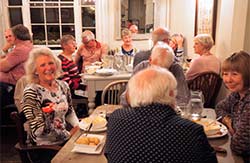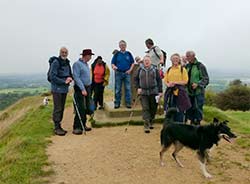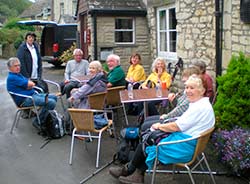Riou & Laura Baxter's walk.
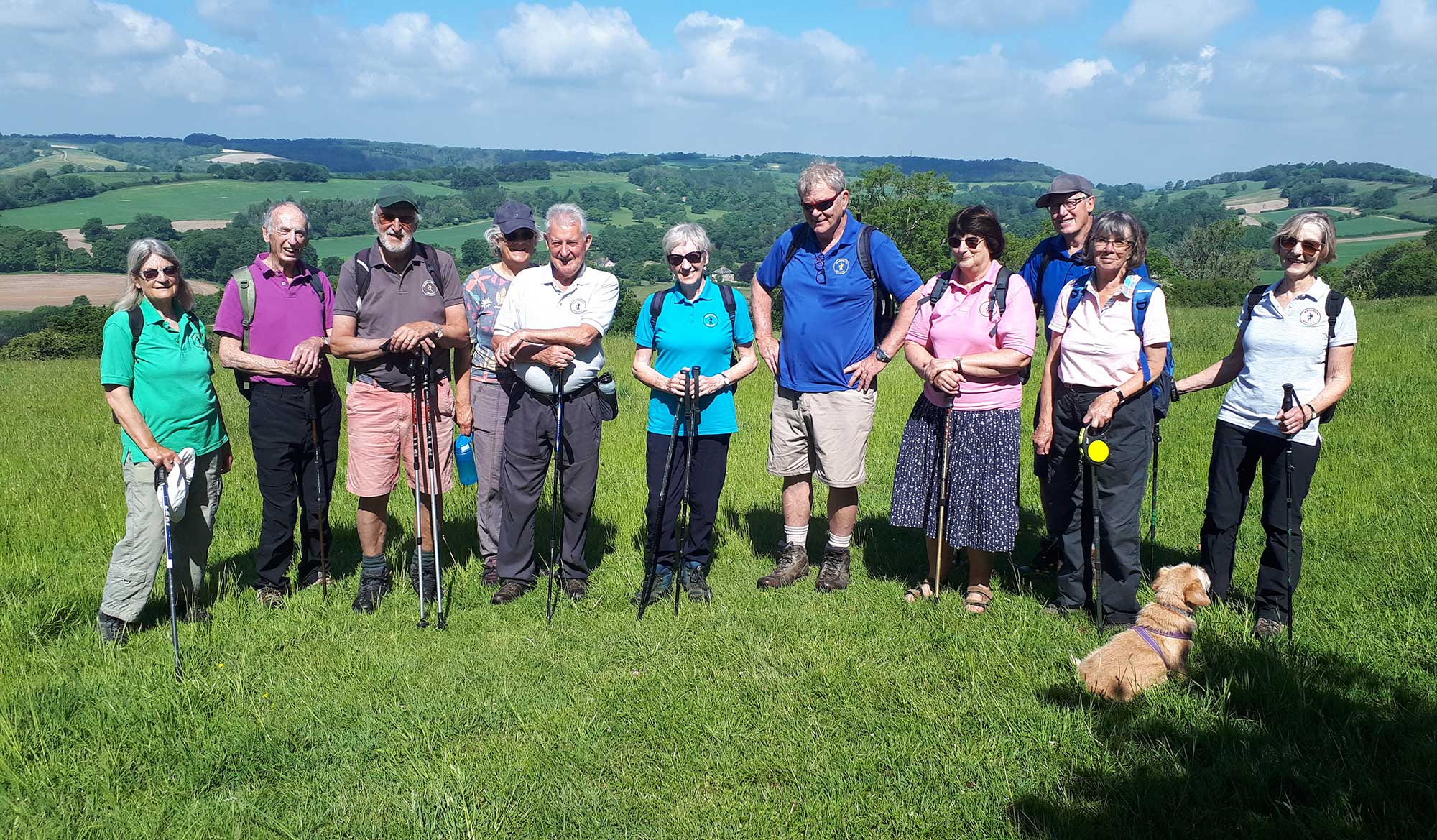
An Elite cadre of 12 walkers met on the Green at 9.15 , and drove to Cerne Abbas Giants car park, where we spent a period of time admiring the manlihood of The Giant. Once we had all regained our composure, we set off up onto the ridgeway towards Minterne Parva and UpCerne walking at a steady pace in glorious weather. The team photo was taken overlooking the beautiful Upcerne estate, which was where we had our deserved stop and coffee break rest.
At this junction the nimble and athletic Tony left us to walk back to the car park, with the remaining eleven athletes continuing on our walk out of Upcerne and up onto the ridgeway, with glorious views into both the Cerne and Sydling valleys, and the Red Kite nos: 4163B who continued to follow us, once Sue S had put her binoculars away!! From here we dropped down a steep slope for 1 mile, and back into the car park, to collect our vehicles and drive the short distance to The Royal Oak in Cerne Abbas, for much needed food and drink after our 6.4 mile beautiful walk.
The pub looked after us all extremely well with great food and drink, all enlivened by Laura B and Mike B discussing the various challenges and merits of chip sharing, the Cinnamon ice cream was an absolute joy!!!
Thank you to all the walking team for a lovely special day in the glorious Dorset countryside.
Love Riou & Laura.xo.
Mileaters say farewell to Bridehead
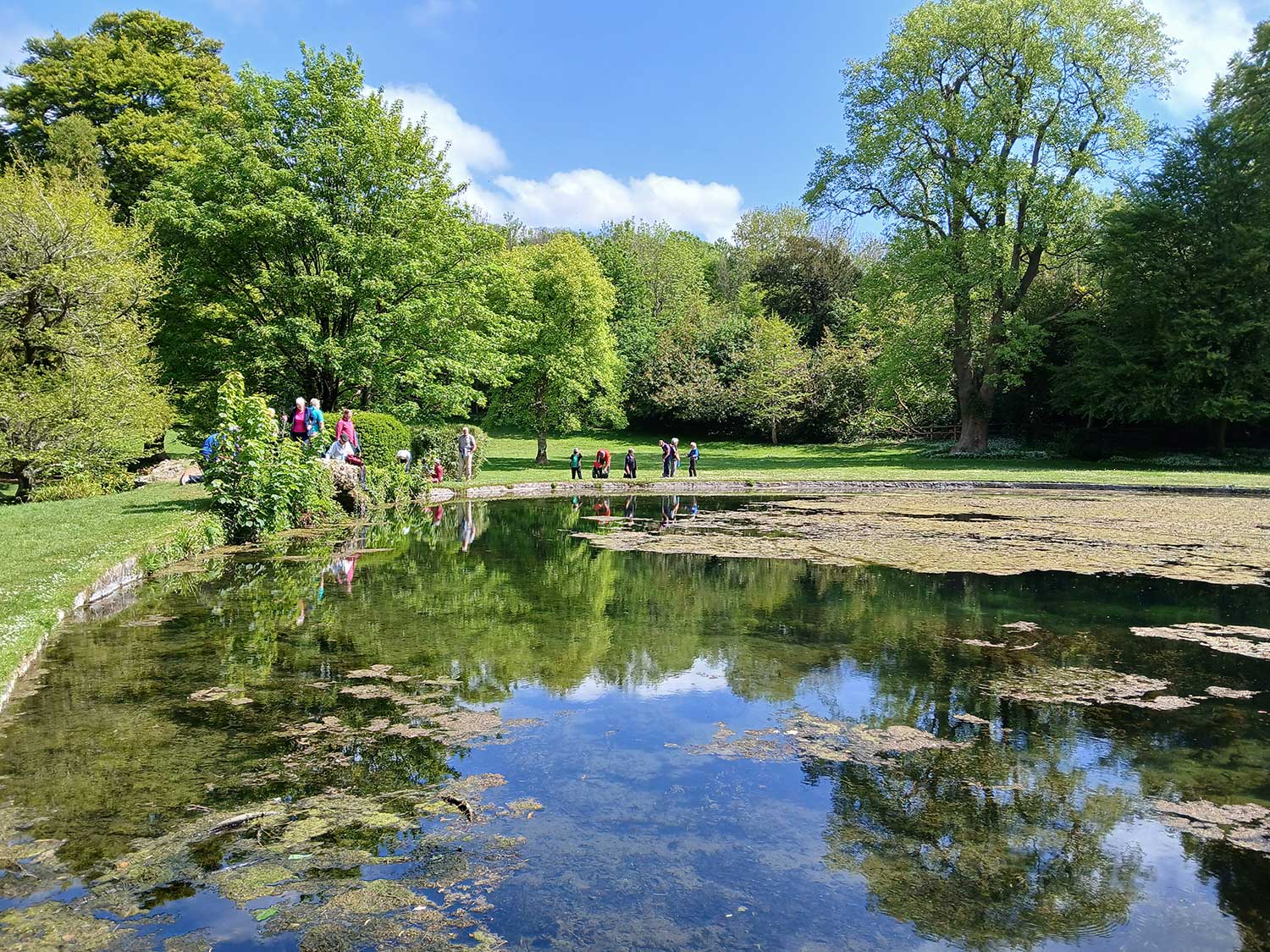
On Thursday 8th May, 21 Mileaters walked 6.30 miles from Hardy to Little Bredy and back. We had a special coffee break by the pond and cascade at Bridehead. Sadly, due to the sale of the estate, this lovely place - enjoyed by so many local families - will be closed to the public from 2 June. We completed our walk through the Valley of Stones and a final steep climb back to Hardy. A welcome lunch awaited at the Brewer's Arms.


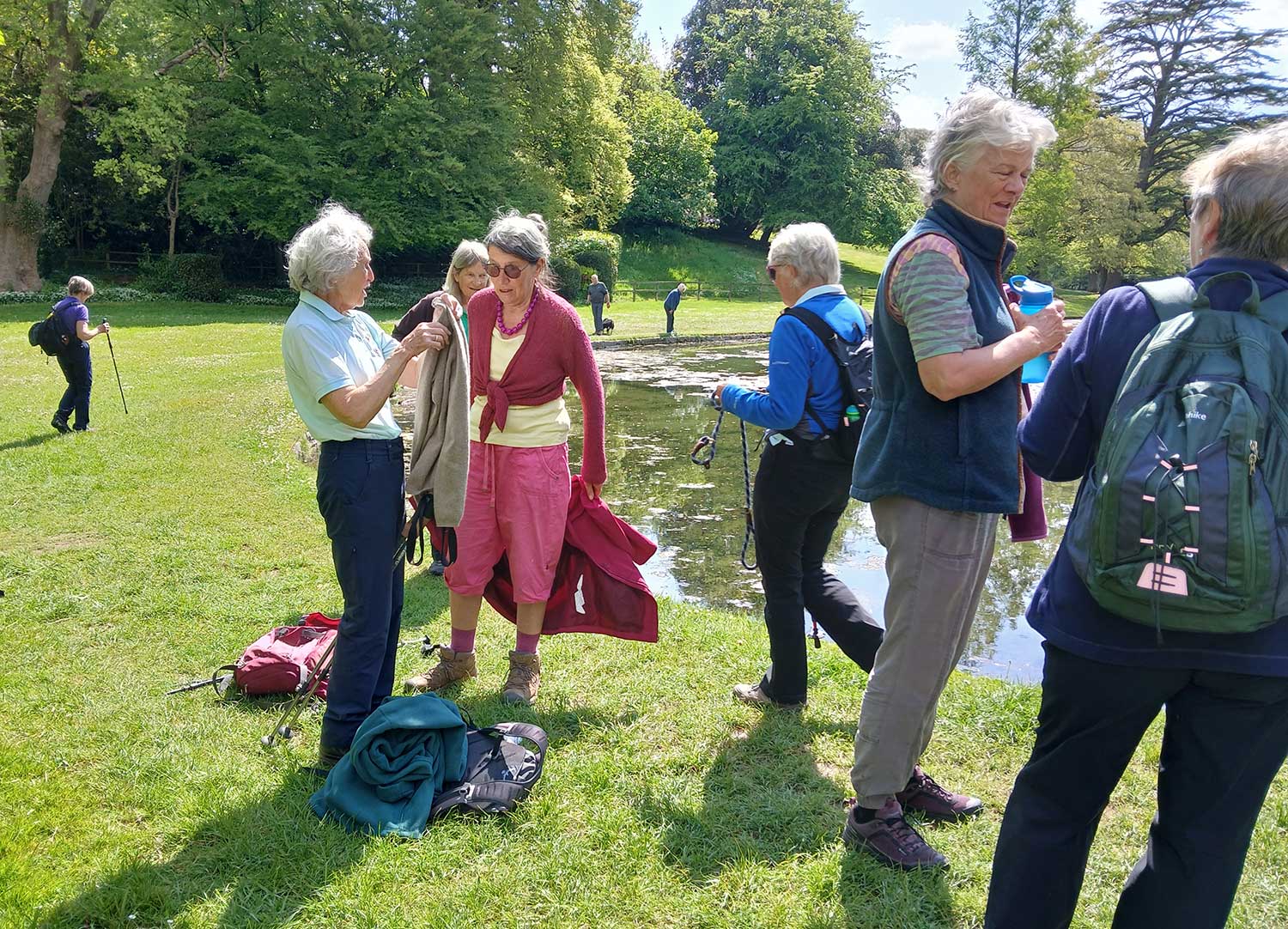
Sue and Louisa Shephard
Mileaters on Tour - face a "Testing" time…
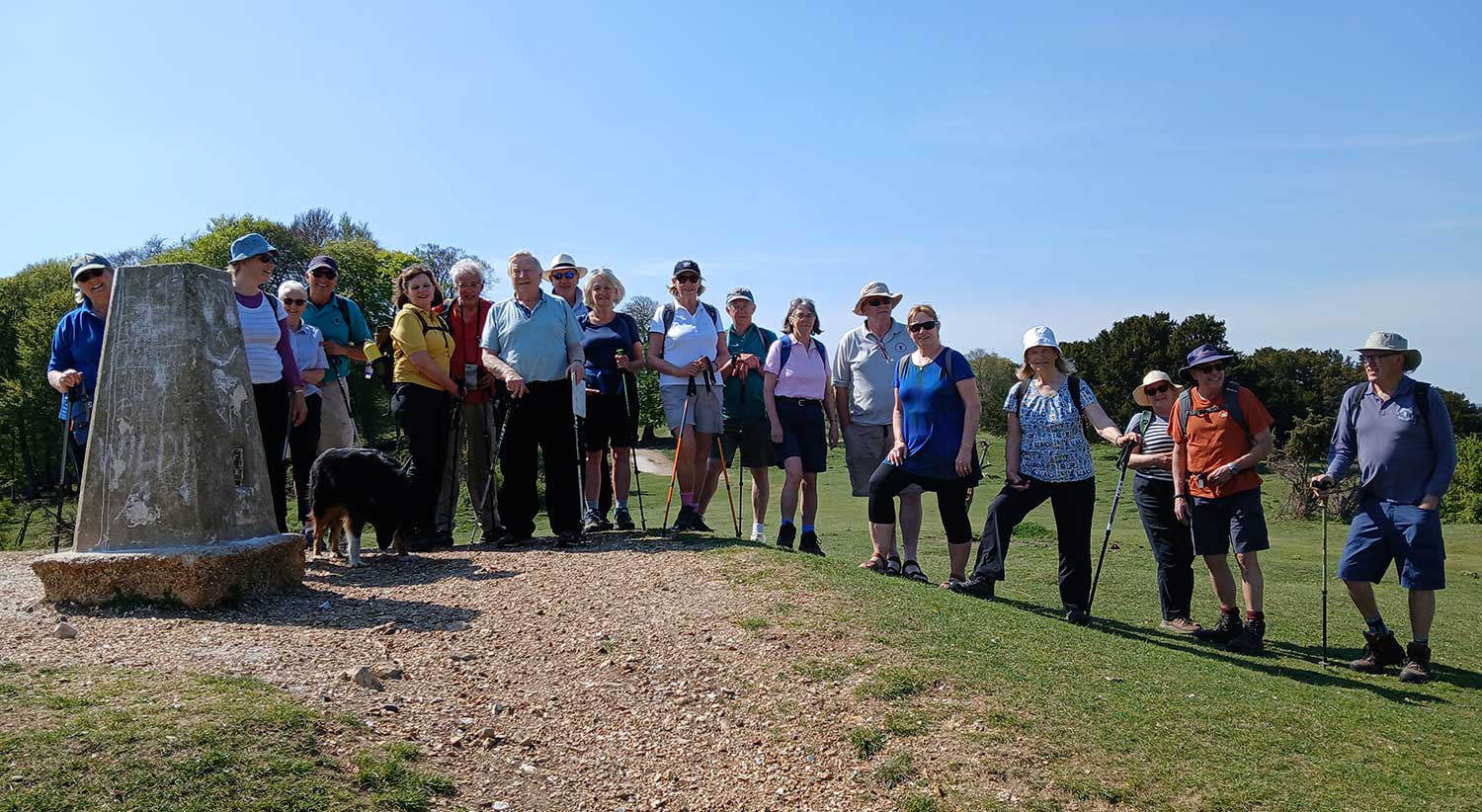
We could not have picked better weather for our annual staycation, this time in the charming town of Stockbridge on the beautiful River Test in Hampshire. 22 Mileaters and 3 dogs gathered for 3 days of walks, drinks, fine company, drinks, pub grub, and yes, more drinks.
No sooner had we checked in and we were off on our first walk - 4 1/2 miles downhill from the fine viewpoint of Danebury Hill Fort, along the Test Way and back to our hotel, serenaded by the first Cuckoo of the year, and accompanied by soaring Red Kites.
The second day was even warmer as we set off along the shady old railway track that was the former "Sprat and Winkle" line, then onto a section of the Clarendon Way with a delightful crossing of the River Test. Another Cuckoo, and yet more Red Kites, and many a tuneful Blackcap. The 6 mile circuit concluded by passing former Horsebridge Station, fully restored to its late 19th Century condition, and now a wedding venue. No surprise, there was the "John of Gaunt" Inn waiting to revive us.
Our final walk, after an inauspicious skirting of the water treatment works, followed above the River Anton, into the picturesque village of Wherwell, and then up into the cooling shade of Upping Copse and a glorious display of Bluebells especially for Linda who had joined us from the Netherlands for this very encounter. After a picnic lunch with the 5 mile mark now behind us, we faced a dilemma - an extra 1 ½ miles, or back to the cars and the option of a rehydrating drink right on the banks of our friend the Test at "The Mayfly" Inn ? Which option did we take ? A wonderful spot to finish an enjoyable few days.
Our grateful thanks to Phil who filled in for our tour organiser Nick who was recovering from a knee operation, by leading all the walks and he didn't lose anyone; "I counted them all out and I counted them all back". Nick provided important logistical support by researching the watering holes and could be found at various important junctions, normally where there happened to be a pub.
Finally, congratulations to Martin, Lesley and Lesley P (where was Mark ?) for an outstanding performance in the "Name that Dog" competition.
We are already looking forward to next year's holiday in Exmouth, under the stewardship of Frances and Rollo.

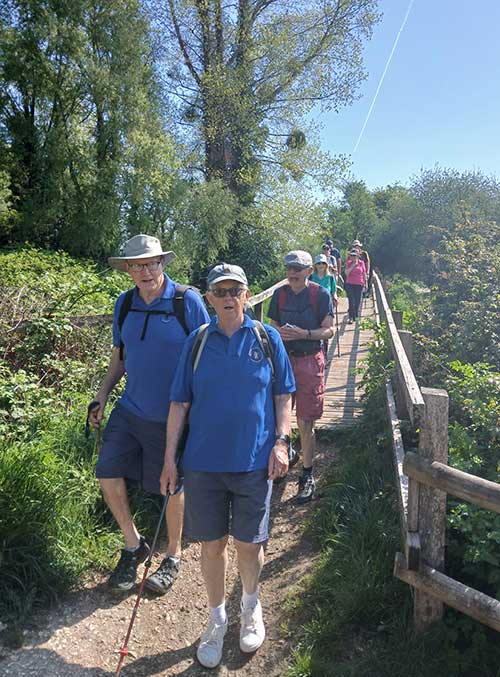
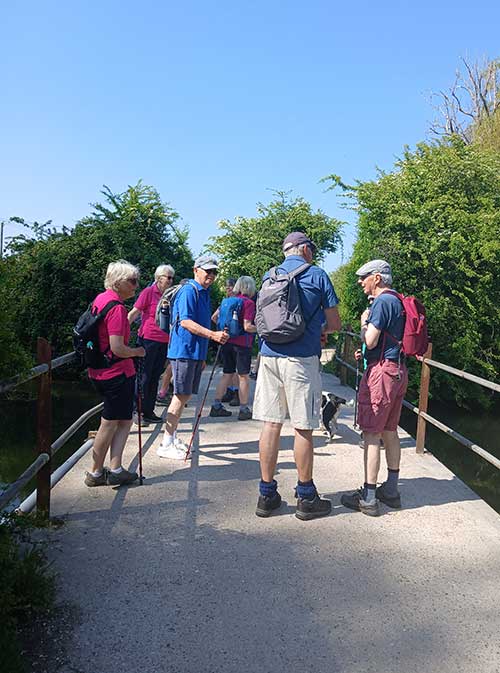
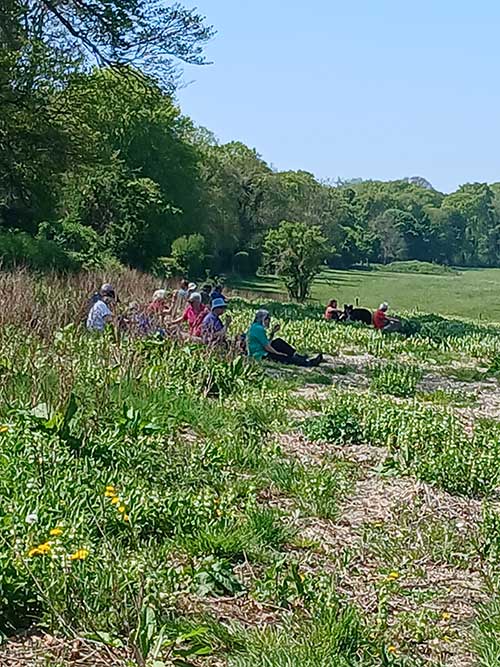

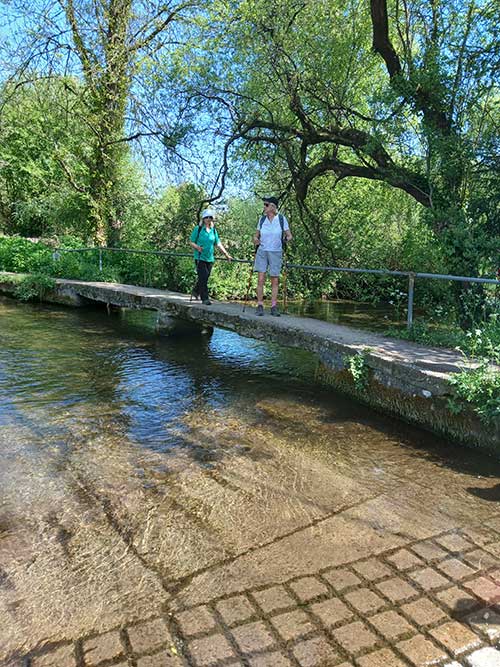
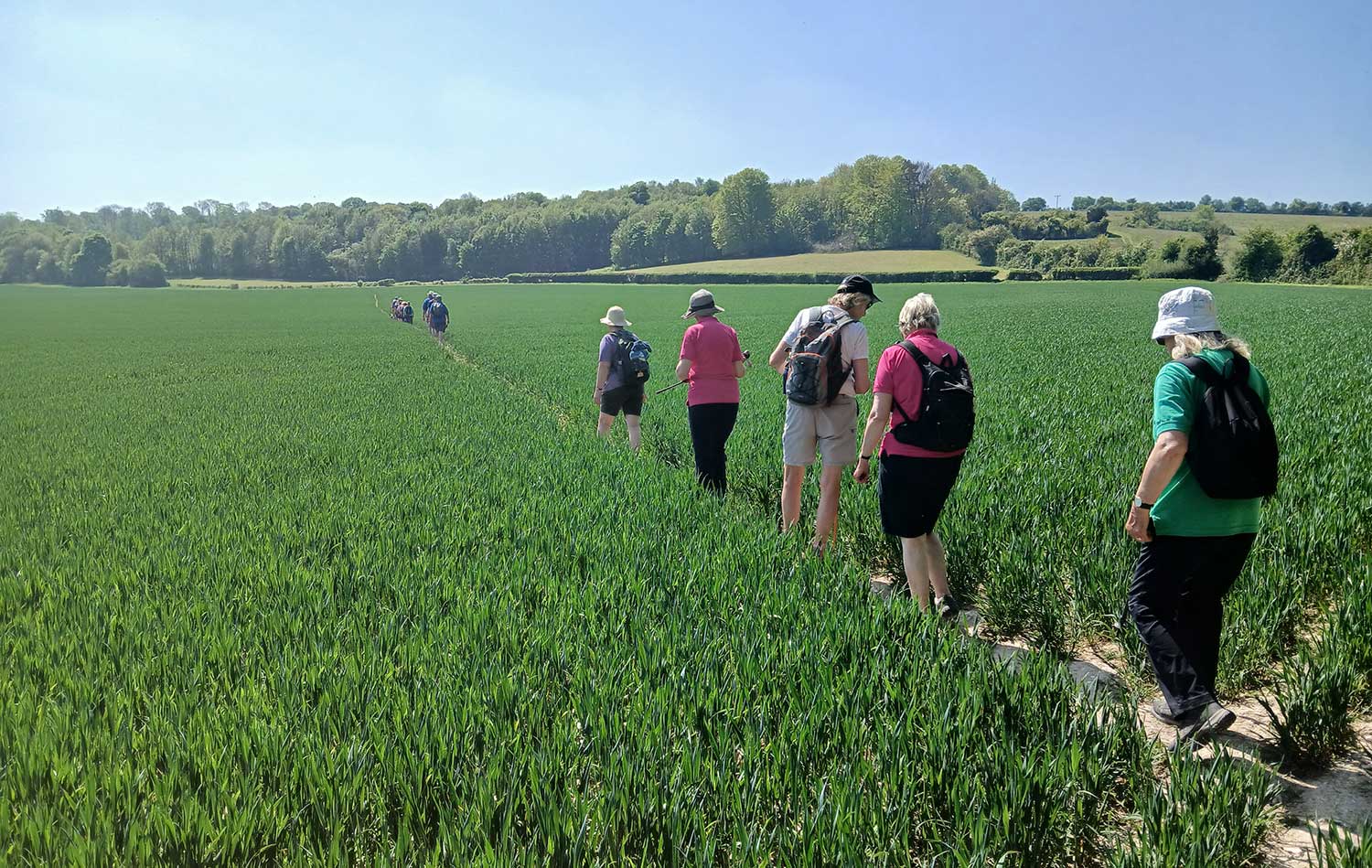
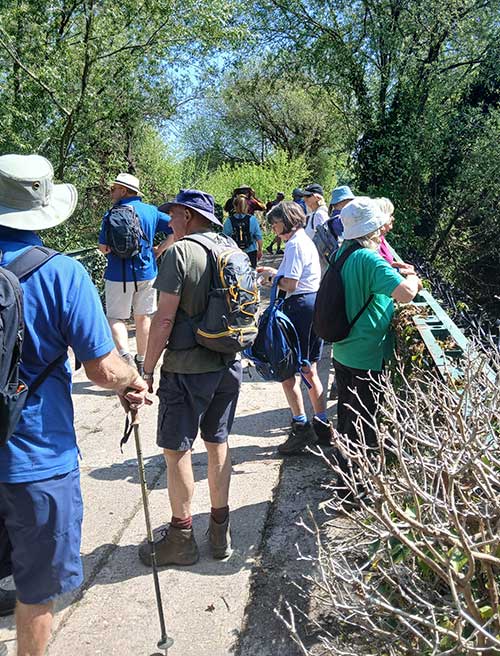
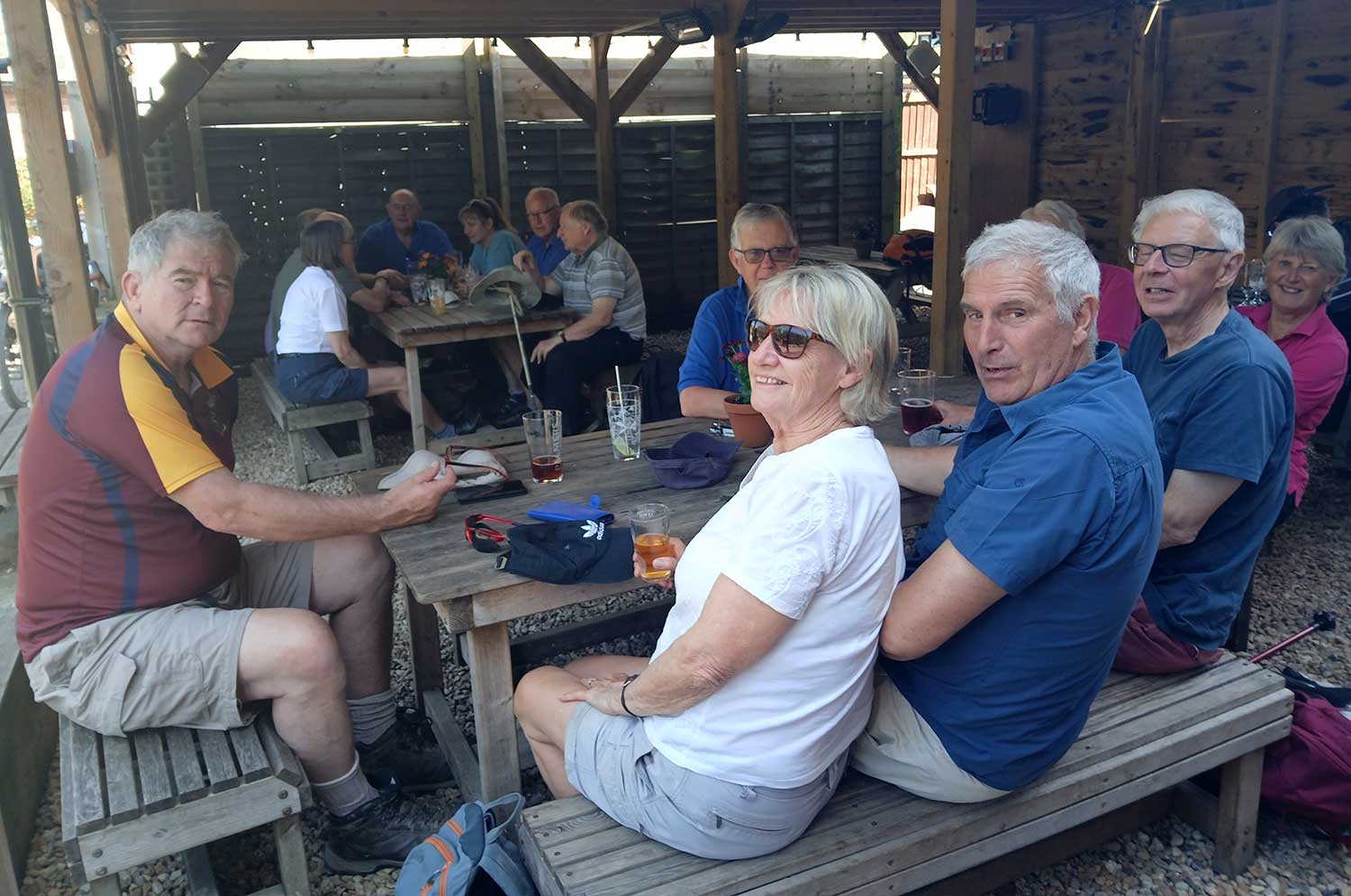
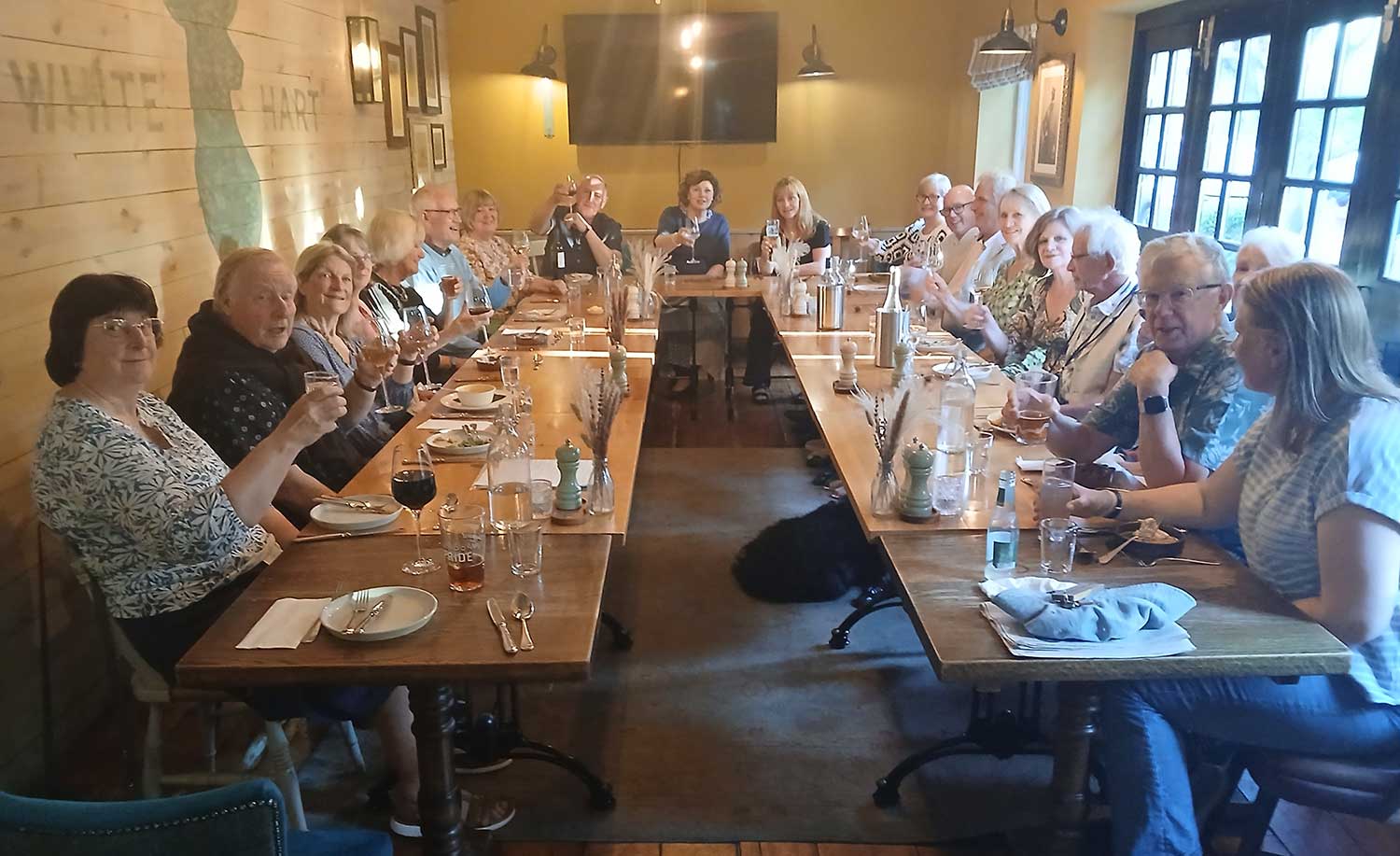
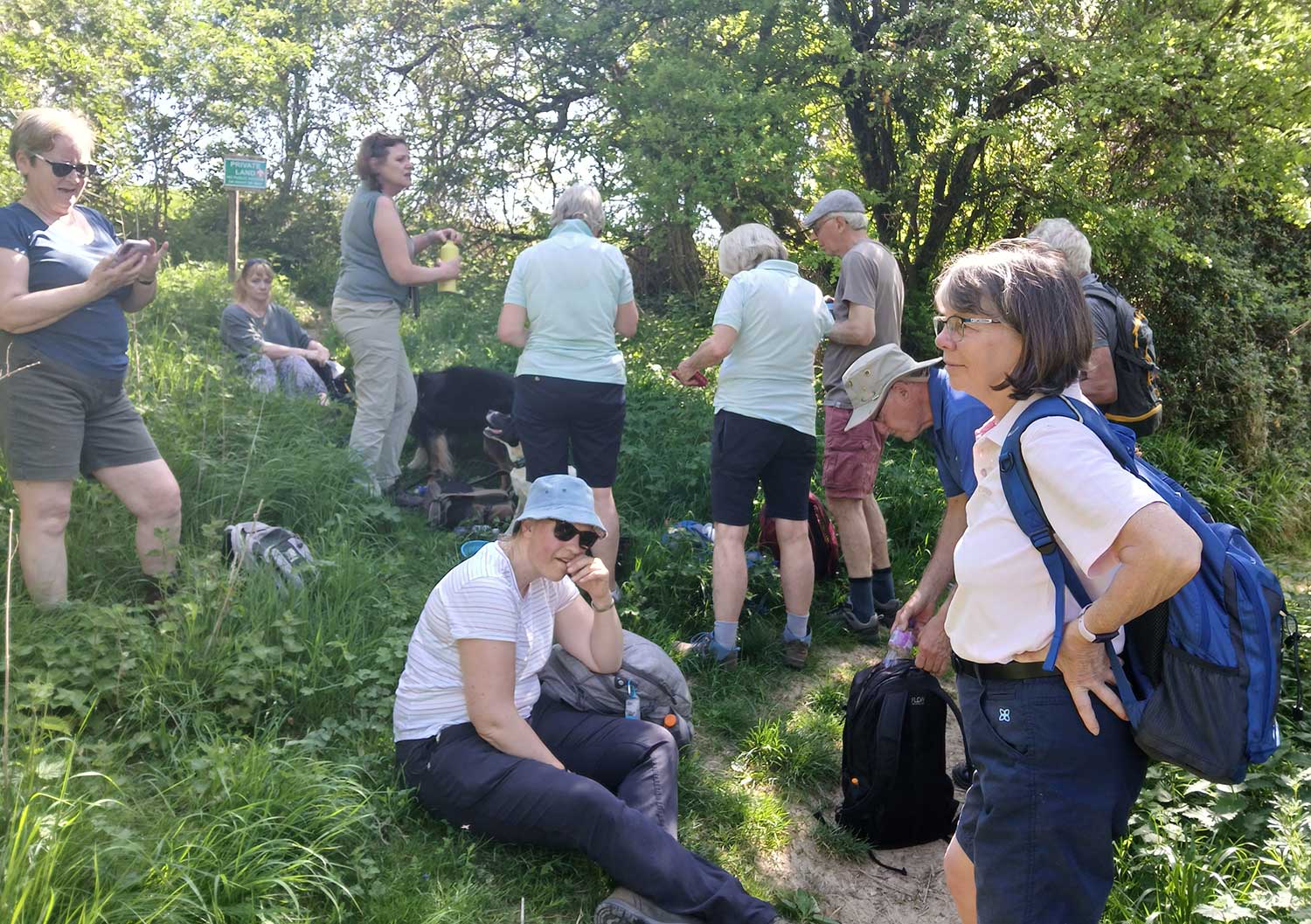
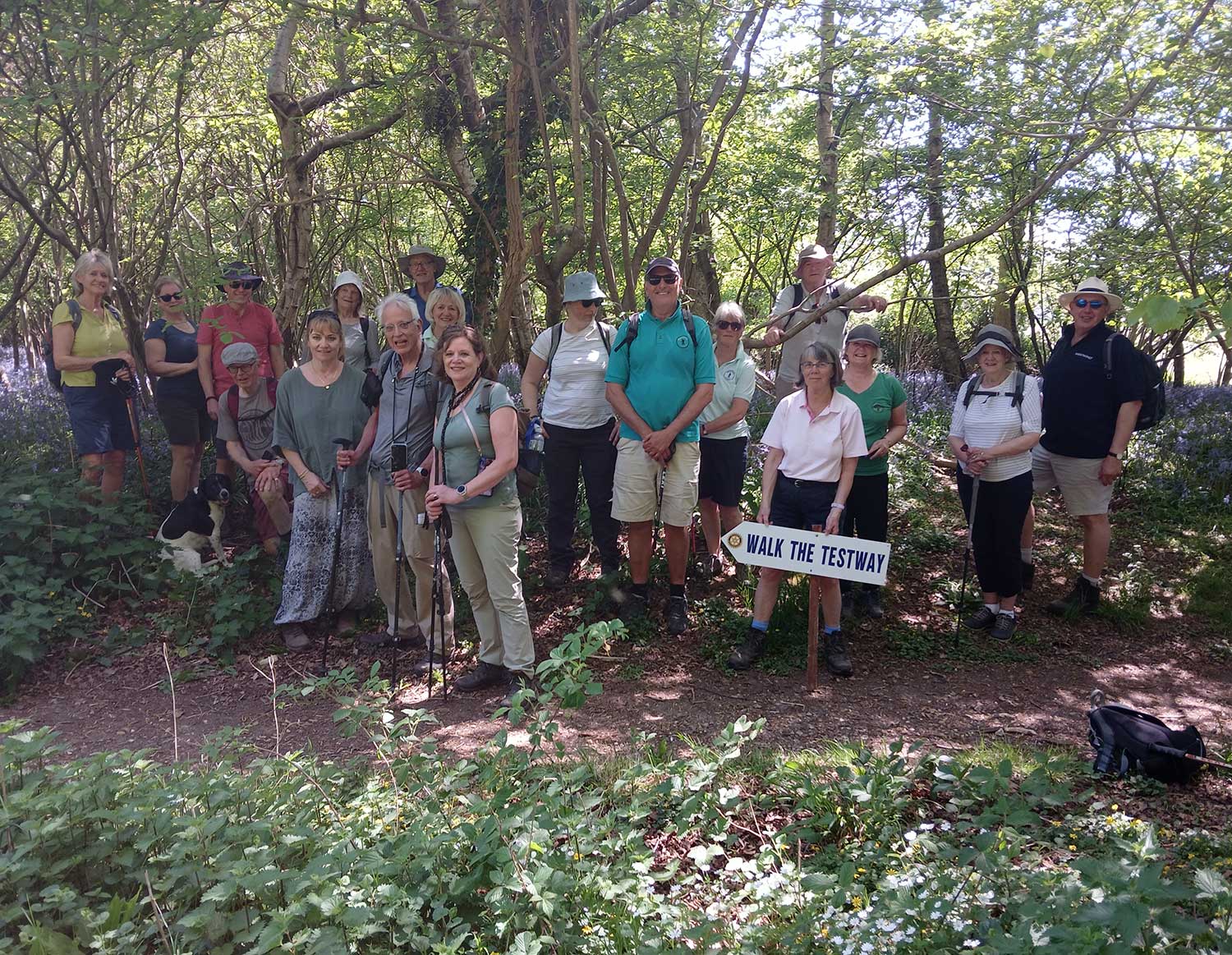
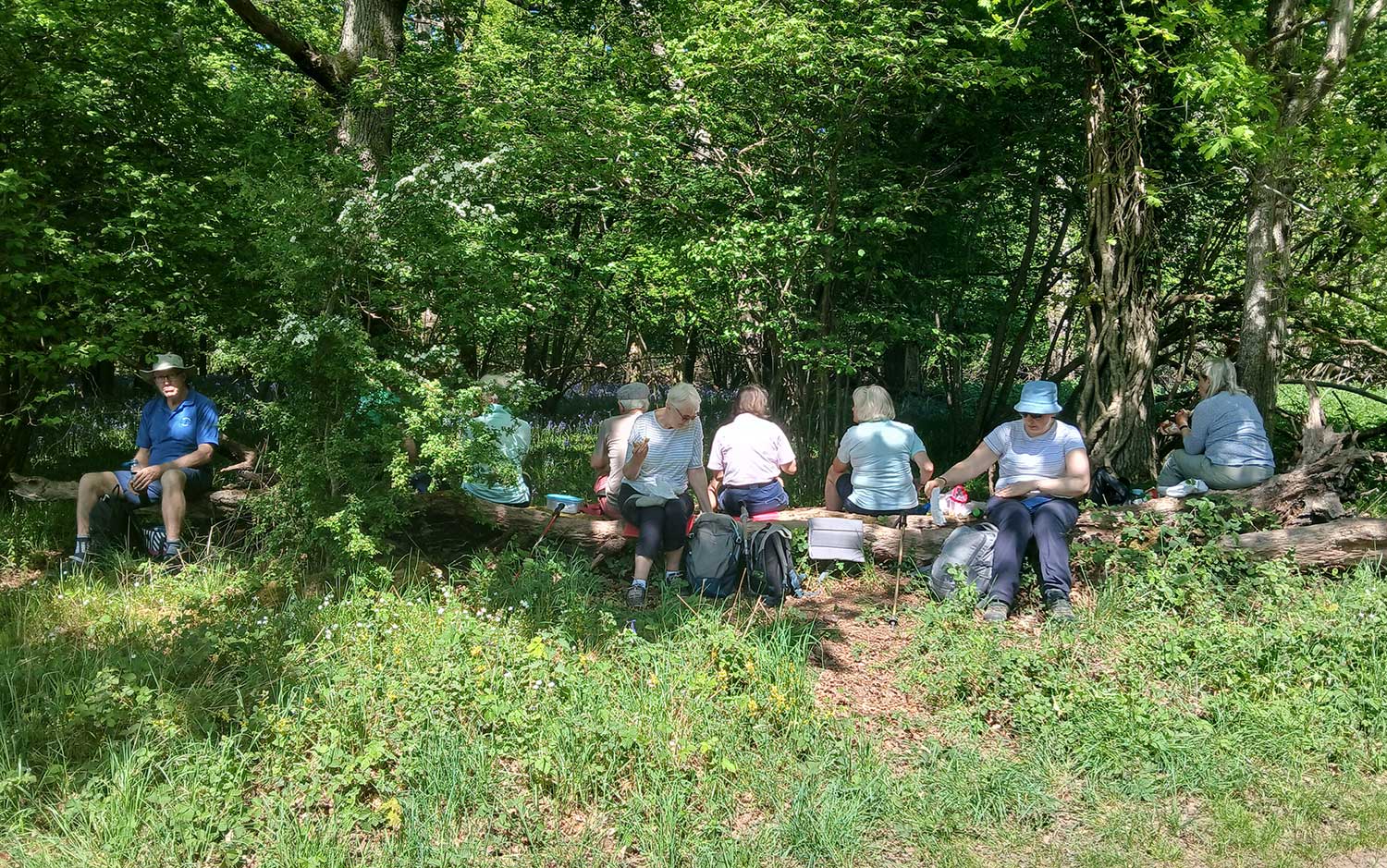
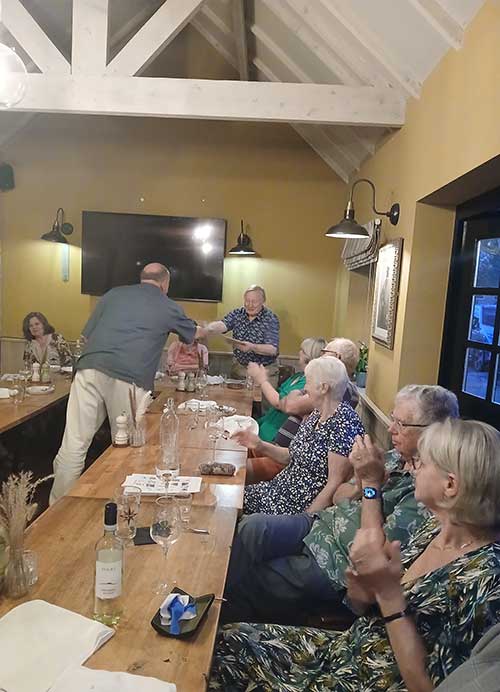
Nick Priddle
Melbury Osmond walks...
Mileaters then and now same place - 2015, 2023 and 2025. 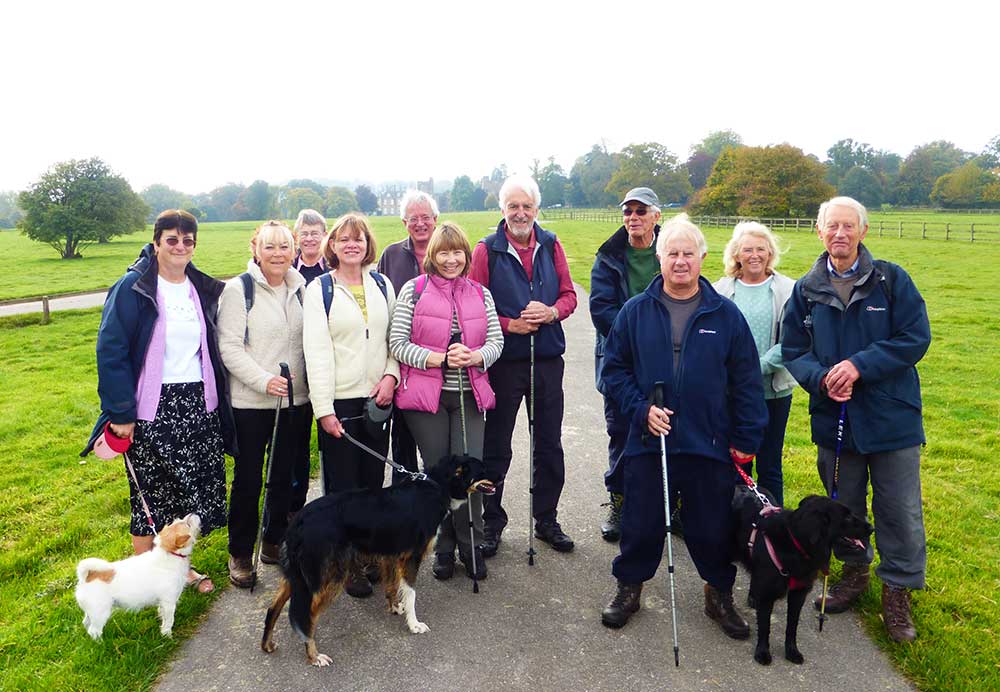
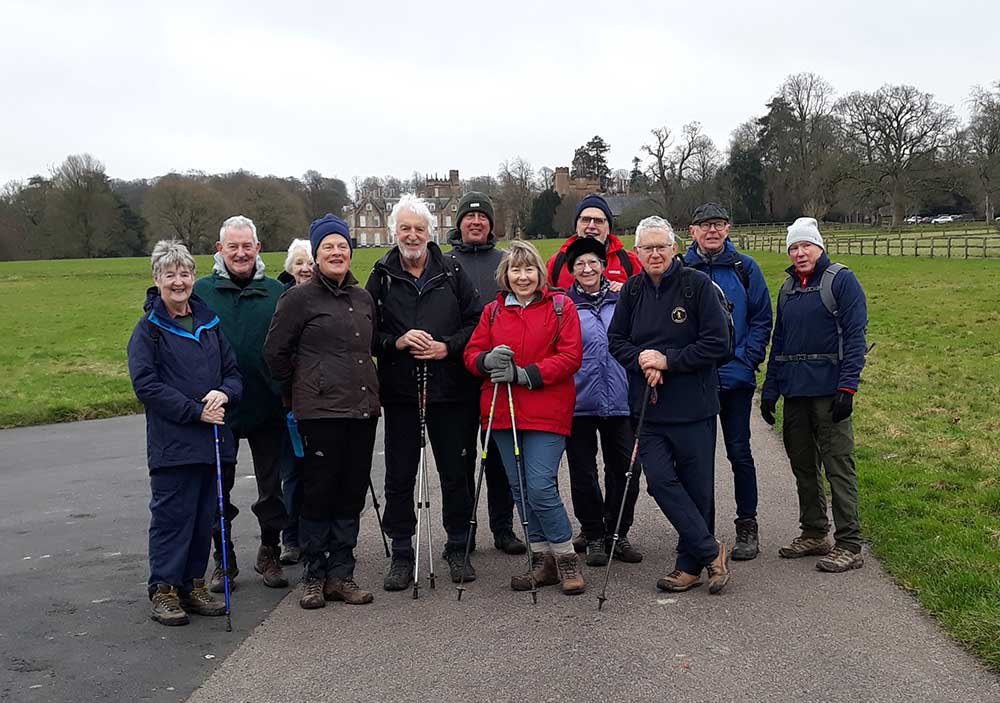
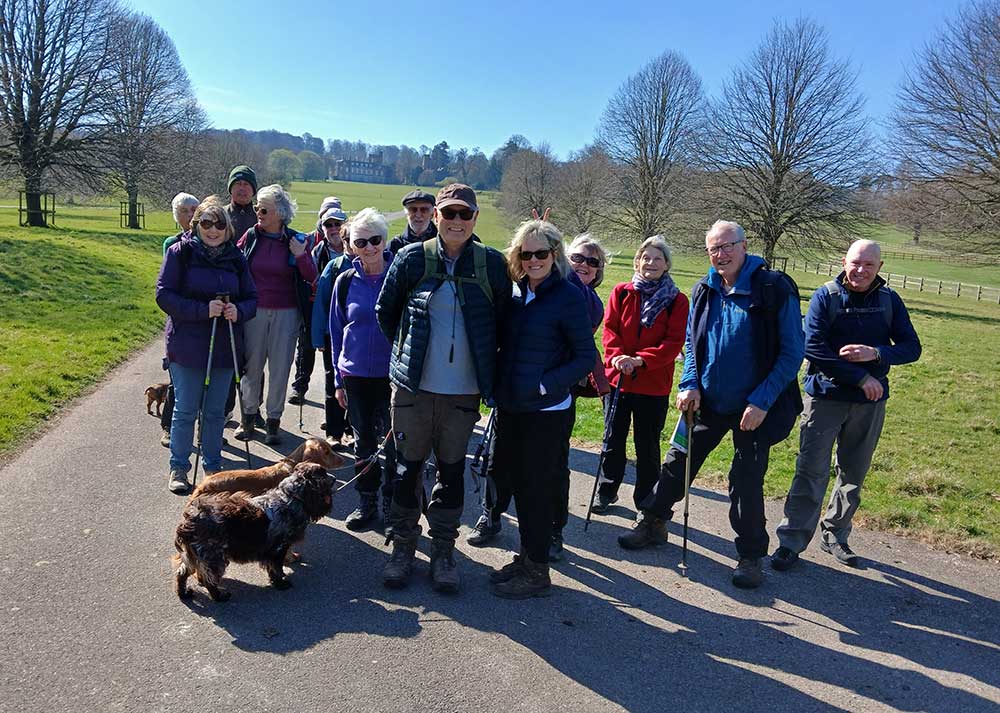
Mileaters walk over Abbotsbury
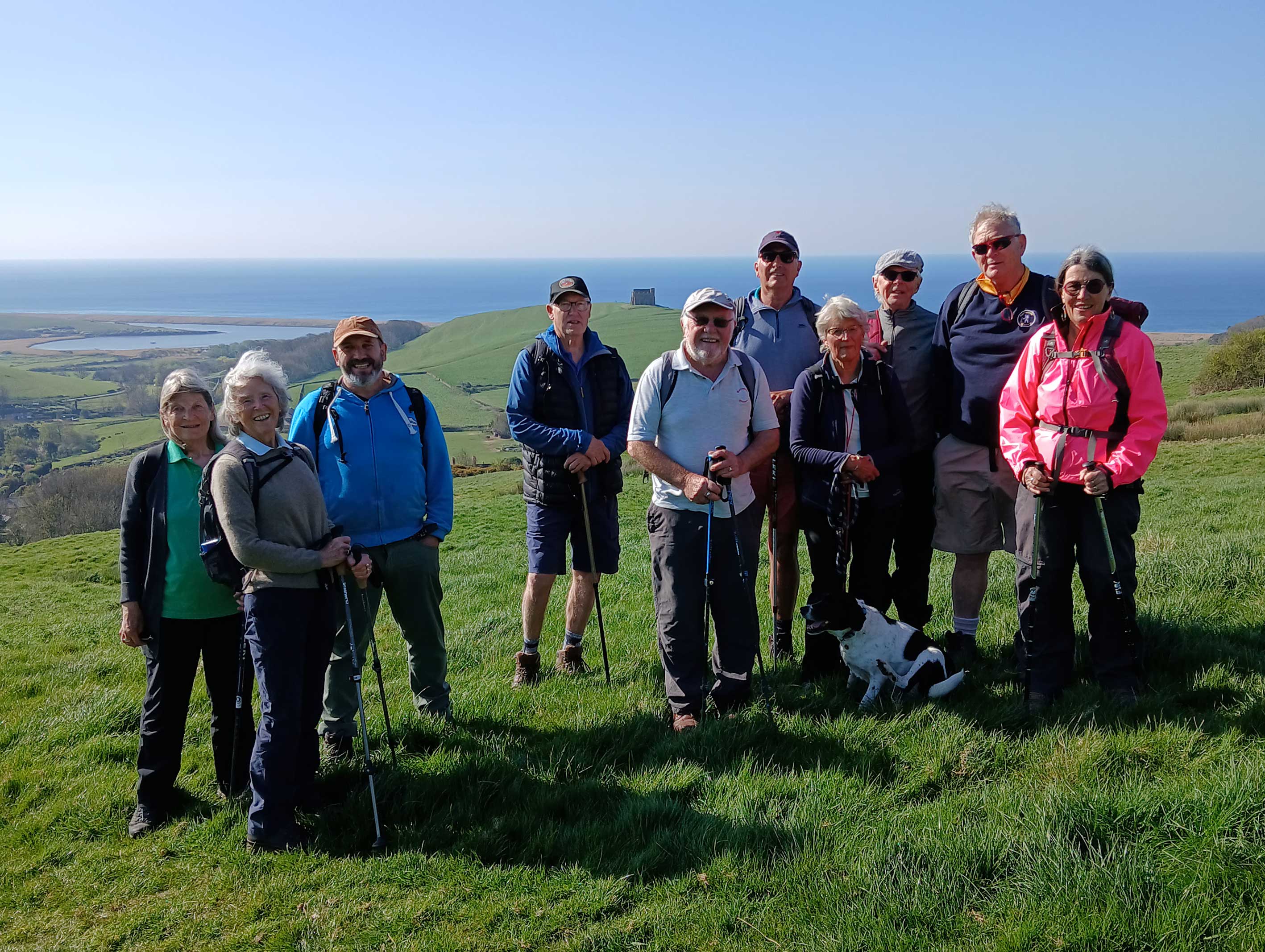
On a lovely sunny morning 11 Mileaters set of to walk from the Swan pub up onto the Ridgeway along passed the Beacon , taking in the wonderful views. Descending down onto the beach road to West Bexington and a quick toilet break we soon were heading around the bottom of St Catherines hill. Strangely enough no one decided to climb up to the chapel at the top. It was along this path a couple of walkers got left behind and some of those at the front decided to go their own route and not the walk leaders!
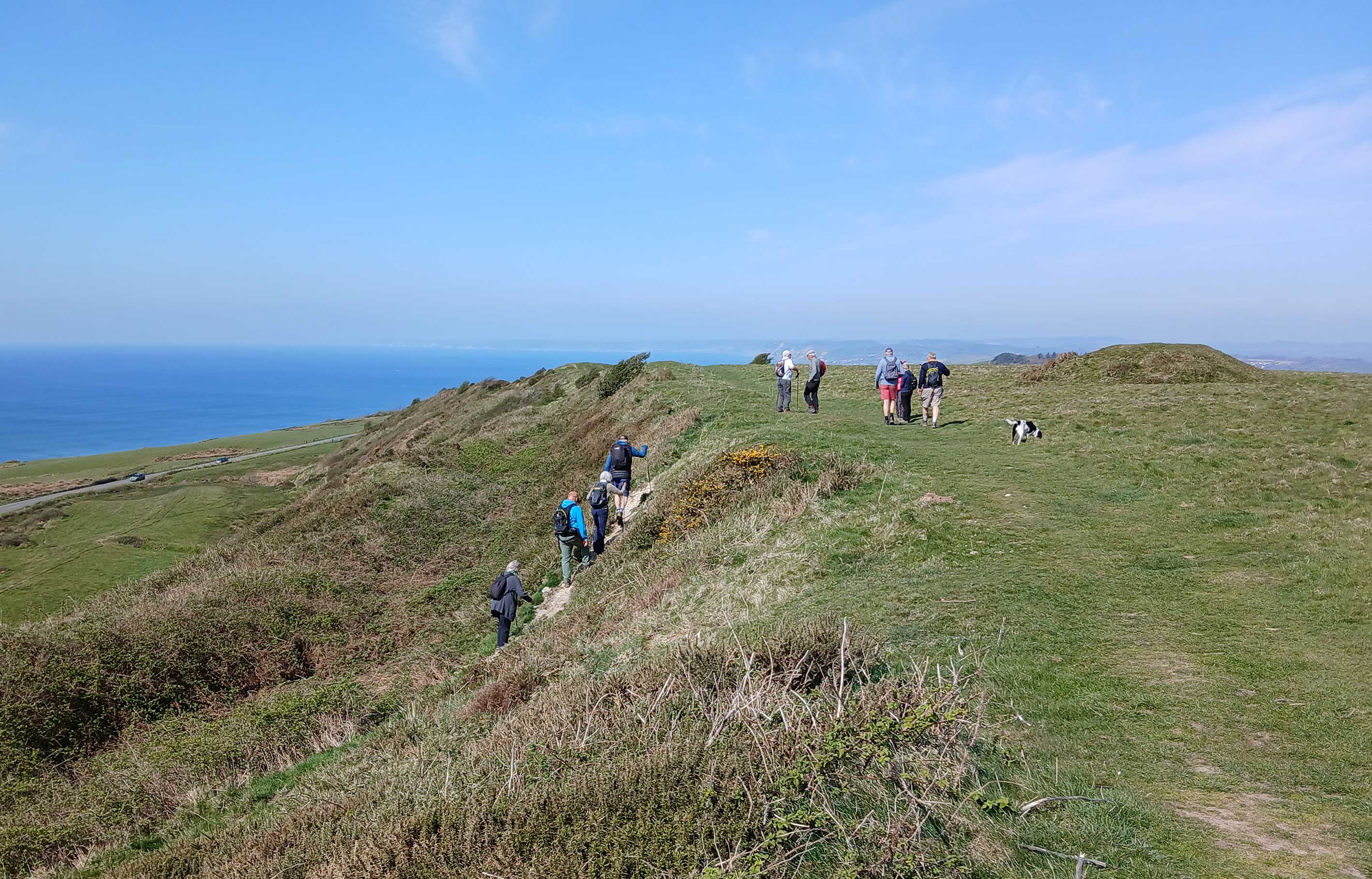
But everyone got to the pub and we were joined by three members who couldn't walk for lunch.
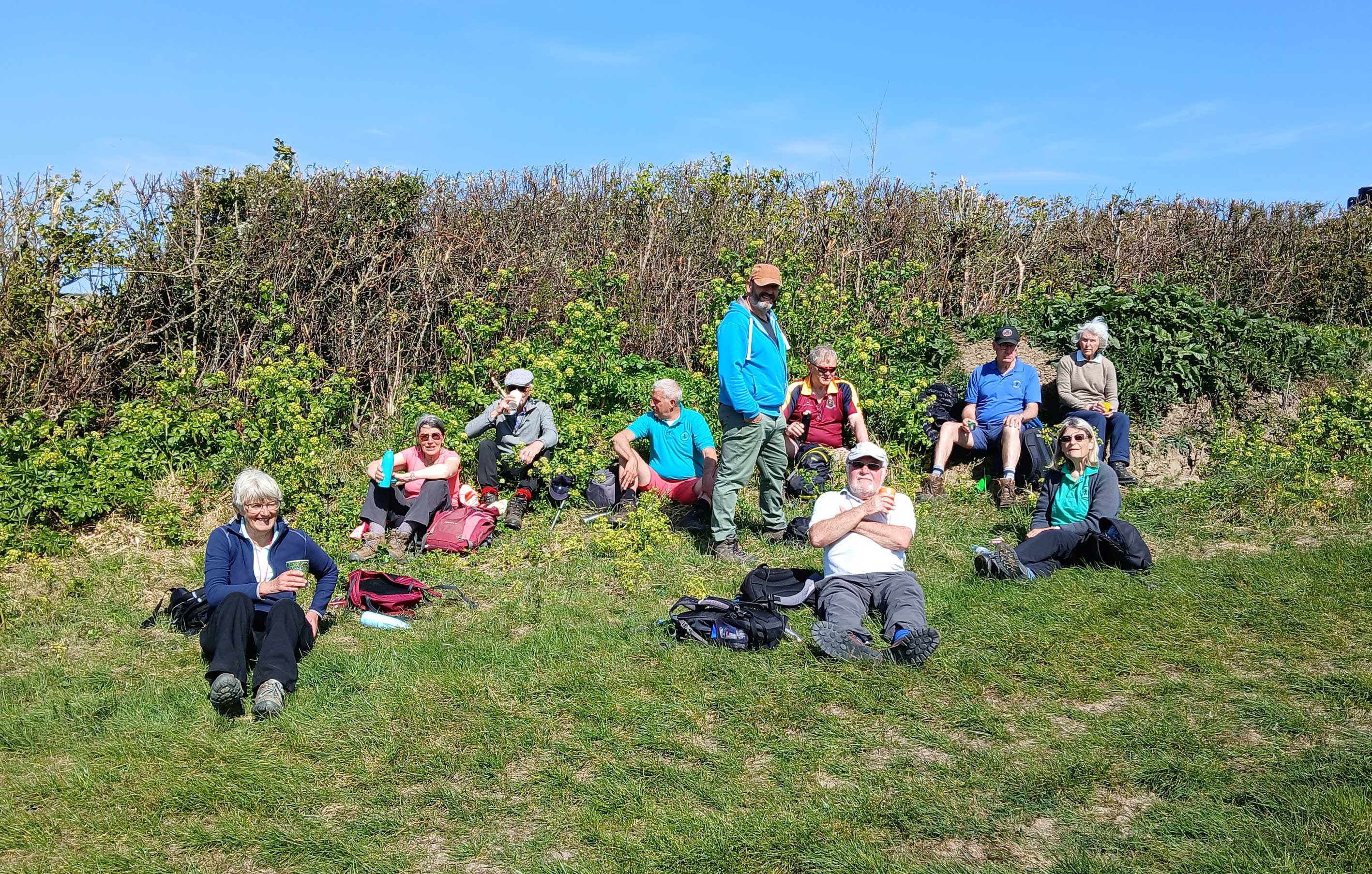
Lunch was eventful, poor Pip dog had a chair put on her foot and when she yelped the table got knocked by Lesley P and all the drinks went flying including Richards whole pint of squash. Fortunately Pip was ok, just Richard a bit thirsty and Frances a bit soggy.
Lesley P


